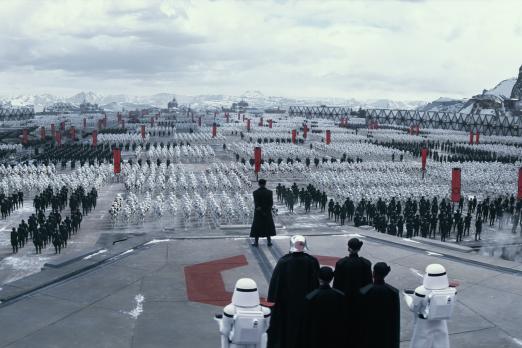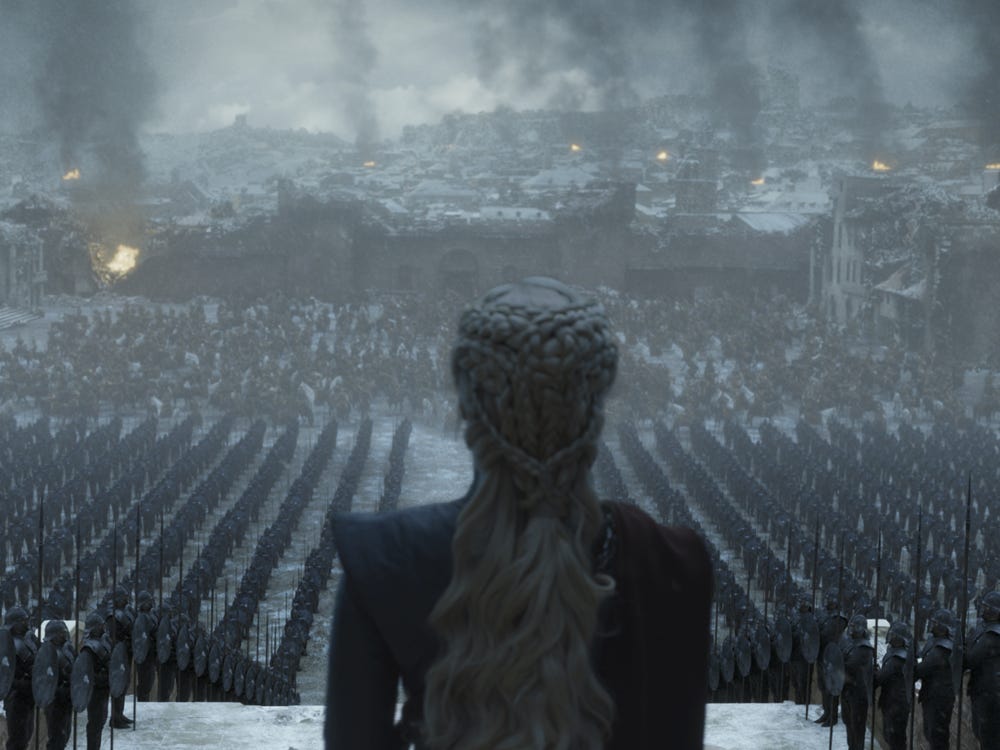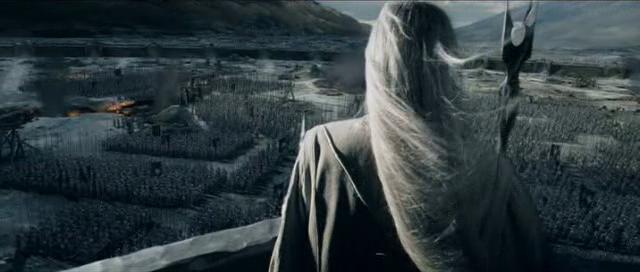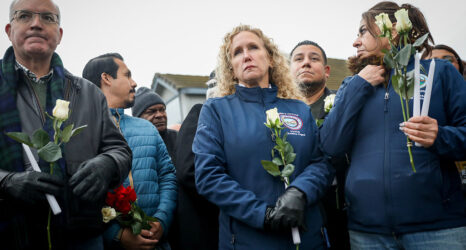When does the repeated adaptation of the same male authors and their ‘classic’ works become just a reduction of every new female-written novel that has the same (if not more) capacity for world-building and audience-awing?
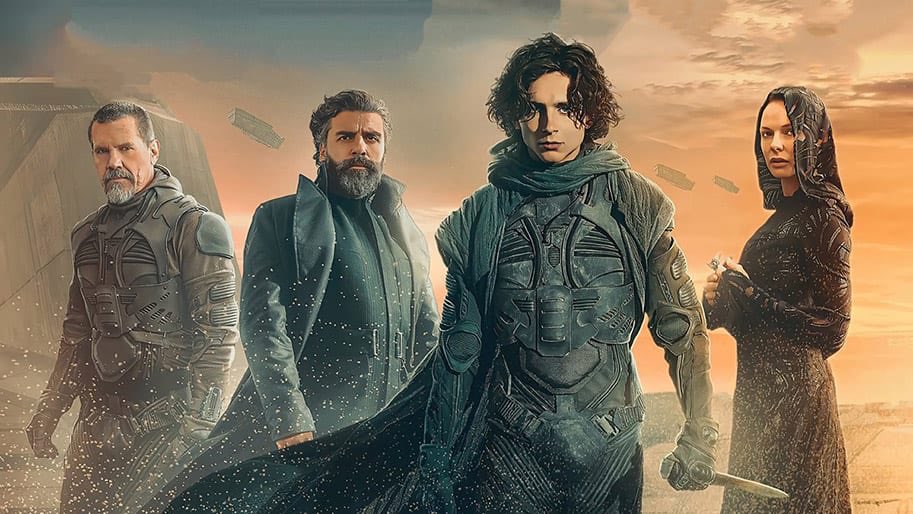
The release of the Dune film saw a beautiful rendering of Arrakis, a stunning show of the advancement of special effects, and… the repeated display of masculine centralization and reiterated narratives, characters and even sound effects and props from the science fiction we already have in rotation.
I am all for reuse, reduce and recycle—but when does an ode to Star Wars cross the line into becoming just recycled images? When does ‘respect for the genre’ become just the reuse of dialogue that hasn’t been updated since the 80’s? And when does the repeated adaptation of the same male authors and their ‘classic’ works become just a reduction of every bright and new female-written novel that has the same (if not more) capacity for world-building and audience-awing that these worn-out tales have?
Dune is one of my favorite classic science fiction novels of all time, but my question in this piece is simple: When will we start to recognize that there are other options when it comes to adult speculative fiction?
Speculative fiction is known for tropes—it’s not uncommon to get a fuzzy feeling when what we expect to happen, happens. There is quick glee at the sudden appearance of the two-characters-one-bed “forced proximity” trope, or comfort in the hard-bread-and-cheese-meal on the road scene. But when does joy in tropes cross the line into just recycling the imagery from the canonically foundational stories? If Dune and Star Wars use and repeat imagery, is it an ode? Or is it just commercially easy to resell what has already sold and has been guaranteed to create a positive reaction?
We can see similar beginnings as the films all include a shot of the big spaceships over a planet:
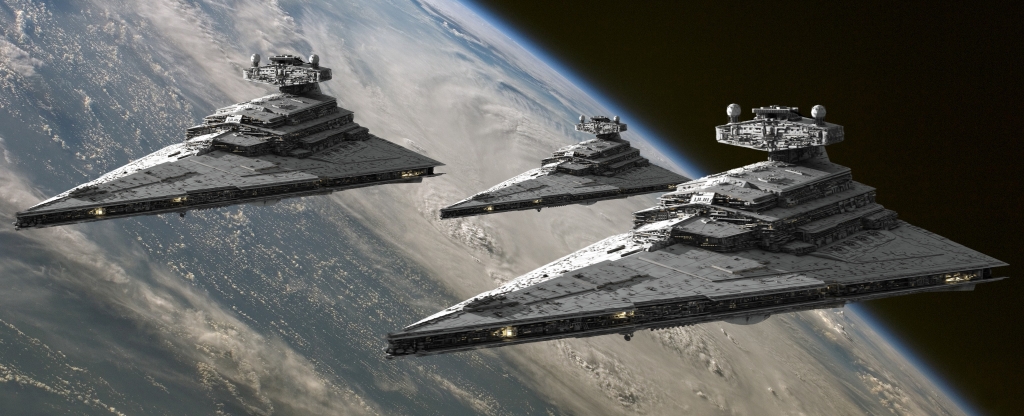
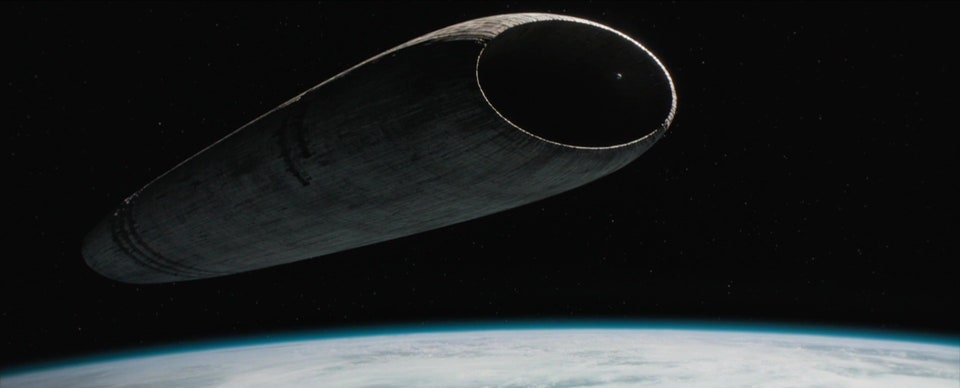
Sure, the sandworm is key to the Dune storyline, but the sarlacc pit in Star Wars is just as sandy, just as wormy—though a bit less teeth-y.
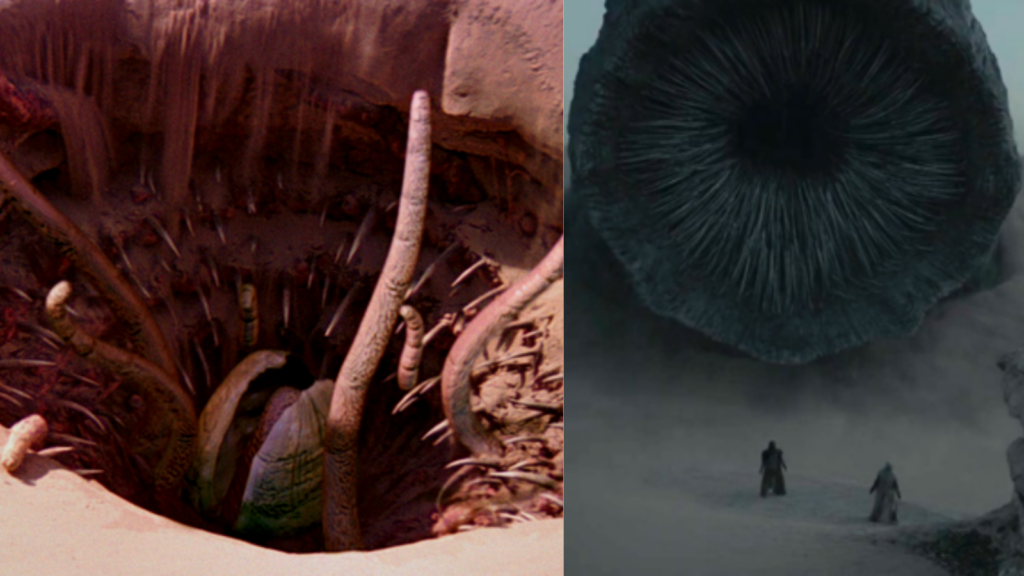
The science-fiction gadgets hold similarity too; I recognized the micro-binoculars immediately.
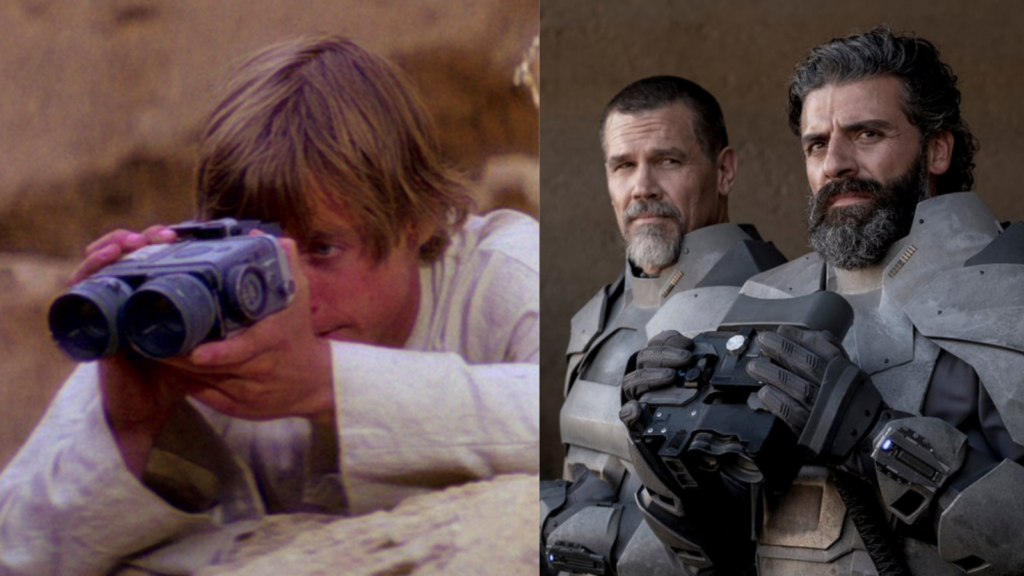
Even our assassination attempts both utilize bugs to follow through with the deed.
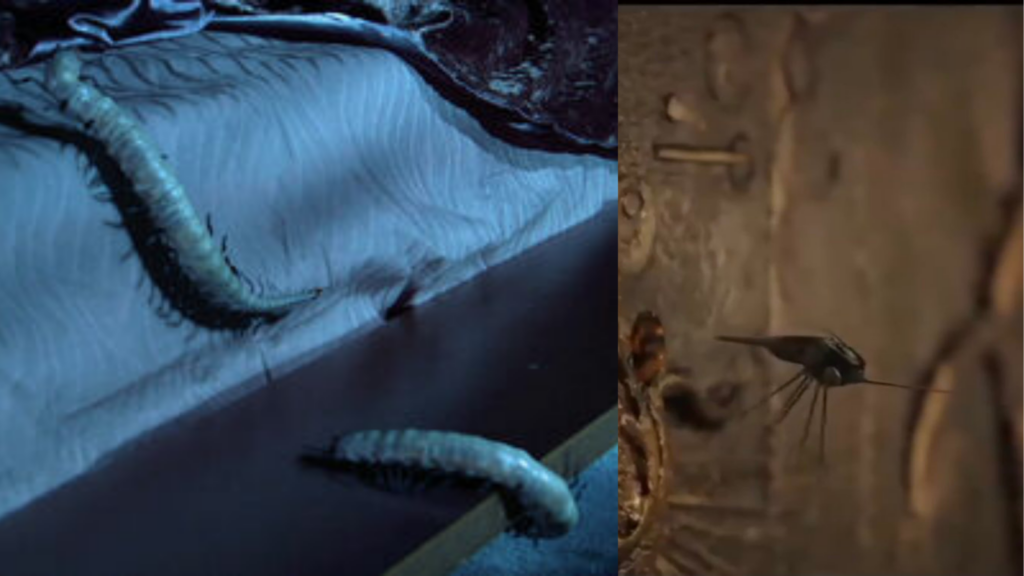
And, the most recognizable shot in most science fiction and fantasy films, within the last decade: the villainous army shot, over the head of the leader.
You can also see similarities between the uniforms of the Harkonnen soldiers and the Knights of Ren, or even the tie fighter pilots of the Star Wars empire. We have imagery of a desert planet—Arrakis and Tatooine—the same style docking ports for spaceships and, even, the same landing gear on the ships as well.
And should I begin to even discuss the reused actors? That would take another article and a half but let’s be real: Diversity is important across all stages of the production and recasting the same 12 actors in every speculative fiction film—from HBO productions to the MCU—doesn’t encourage opportunity.
More than that, and beyond just recycled images and actors, the dialogue of the film appeared to be just as reused. We open with our angsty hero Paul, the pressures (albeit, with more understanding parents) of royalty, ceremony and pomp. Paul’s moment between him and Duncan Idaho, right before leaving for Arrakis, as he speaks on dreaming of death, reminds me of the angsty Anakin dreaming of losing Padme. On the vein of Duncan Idaho, how reminiscent is their relationship of Luke and Han—our grumpy rebel working on his ship, caring for the kid, uninterested in getting sucked into the trouble of the hero?
Paul also reiterates age-old dialogue as a teen son, limited to the constraints of the ‘palace’, ready to face the world, reminding his father that he has been trained for the violence and the battles to come. All to be reprimanded by his father, who reminds him that he cannot take such risks, as he is the future of their bloodline. So much rests on his shoulders.
And all of this only within the first 15 minutes!
And within these first 15, we have more than just recycled images and reused dialogue, but also the expected and perpetual reduction of female roles. We have a central mother-figure in Lady Jessica, a powerful character in herself, but she is easily overwhelmed by the talents Paul has in her magic—a traditionally female magic of the Bene Gesserit. Her power remains decentralized in the light of Paul’s “chosen-ness”, and her narrative focuses almost entirely on her placement as a vessel. She bears and trains the chosen one (Paul) and eventually the Abomination Alia Atreidas. She acts as mostly only a vessel, without political power as she is situated as a concubine only, and, in the rise of Paul, with a reduction of her own magical power. Why must we center a narrative that promotes our male hero appropriating and then conquering the female magic of the world?
Why must we center a narrative that promotes our male hero appropriating and then conquering the female magic of the world? If speculative fiction allows the possibilities of massive sand worms, spaceships and spice wars, and telekinesis, why couldn’t it allow a possibility that women can have a powerful and central narrative?
Even though Dune may get some brownie points for centralizing a mother figure, the second female character—Chani, played by Zendaya—is given only seven minutes of airtime in the film. Plenty of articles hash out the why, how, how comes and why nots, and I won’t go into that here, but I will make the same claim I have made many times. If speculative fiction allows the possibilities of massive sand worms, spaceships and spice wars, and telekinesis, why couldn’t it allow a possibility that women can have a powerful and central narrative? And why are we only choosing speculative fiction stories that decidedly ignore the existence of multi-dimensional women?
I didn’t hate the film, nor do I think modern adaptation of the classics is a poor practice, nor that reusing fantasy and science fiction tropes is anything out of the ordinary. Nor do I want to reduce the complex creation that is the world of Frank Herbert’s Dune to the choices of the film producers. What feels like a true reduction is the choice to re-adapt a film from the 1960’s, with similar tropes, narratives and imagery as one of the most popular science fiction franchises of all time, instead of moving on to the possibilities that have opened up in the literary field of speculative fiction.
There are women, people of color and queer folx who write amazing speculative fiction—rich with classic and contemporary narratives, tropes, worlds, creatures and storylines and, most importantly, full of people that aren’t the straight, white, male standard (in whatever combination) that we continue to see in the genre. The lineup of ‘classic’ speculative fiction work being adapted remains in this format, having already seen the release of The Dark Materials series and The Witcher on HBO and Netflix, respectively; the recent release of the ultimate classic—Robert Jordan’s Wheel of Time—as a television show; the upcoming development of new Game of Thrones and Lord of the Rings spin-offs; and whispers about Patrick Rothfuss’ Kingkiller Chronicles trilogy being adapted by Lin Manuel Miranda.
Yes, we have had female-written young adult speculative fiction books made into films (Hunger Games, Twilight, Divergent, Shadow and Bone more recently), but YA, love-triangle stories are not where the diverse speculative writing stops. Doesn’t the focus on adapting romance-led speculative fiction just reenforce the stereotype that women only write romance? Even considering the treatment of the more famous speculative fiction stories written by women—with similar themes to Dune—we can see the discrepancies in the genre.
The brutal attempt(s!) at adapting Ursula Le Guin’s Earthsea series left the author herself out of the productions, and led her to give a public denouncement of the series. There is a discussion of a new adaptation of the series, but the timing of the undertaking is something I think is a feminist concern: Is adapting a woman-written story posthumously a celebration of her talent? Or an easy way to not have to incorporate her into the production? Or did the respect for her work simply come too late? What about adapting the Earthsea trilogy? The series is also classic speculative fiction work, about a magic boy, coming of age, if we are to compare it to the choice of adapting Dune.
Or, what if we look at celebrated and award-winning speculative fiction? Just as Dune was a Hugo Award winner, so too was N. K. Jemisin’s Broken Earth trilogy—and she won for all of her sequels. Jemisin’s award-winning trilogy features a woman of color as main character and would also give us another (literally) earth-shaking ride. We can hold onto hope, though, as Jemisin’s Inheritance trilogy has been optioned for television. Perhaps we have an open world of diverse, women-, queer- or PoC-written speculative fiction on the future.
Want some recommendations? Here is what is on my bookshelf right now:
- Hugo and Nebula Award Winning Sci-Fi: Nnedi Okorafor’s Binti
- Steampunk Meets Fantasy: Jaine Fenn’s Hidden Sun – Shadowland Series
- Zombies Meets Historical Fantasy – Justina Ireland’s Dread Nation
- Fantasy Adventure (trolls and wizards!) – C. M. Waggoner’sUnnatural Magic
- Sci-Fi Space Opera – K. B. Wagers’ There Before the Chaos
- Dystopian Indigenous Future – Cherie Dimaline’s The Marrow Thieves
Up Next:



